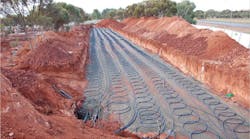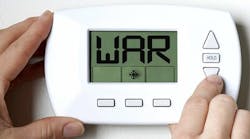In a previous life, I served as president of a company that manufactured – among other things – a line of regenerative turbine pumps. We found that our products had a niche application in heat pump systems, both water source and geothermal (ground source).
Our previous experience with water source heat pumps was much more extensive than that with geothermal. So in an effort to learn more about the geothermal heat pumps, I went to the International Ground Source Heat Pump Association (IGSHPA) at Oklahoma State University in Stillwater OK. There, they make use of the university’s extensive facilities for research and training, and OSU is generally recognized in the industry as the center of excellence for geothermal technologies.
Admittedly, since leaving that company and moving for South Florida some 12 years ago, I have not had much of an interest in ground source heat pumps. Much of the cooling here is via water source heat pumps on condenser (cooling tower) water systems. That changed, however, with the release of a recent report by the U.S. Dept. of Energy, entitled, “GeoVision: Harnessing the Heat Beneath Our Feet.”
An erupting geothermal geyser showing areas of geothermally altered ground. Photo: Sigurdur William Brynjarsson/Geothermal Resources Council/USDOE
According to DOE, the analysis upon which that report is based was a multi-year collaboration among DOE’s National Labs, other federal agencies, plus industry and academia. The areas focused on in the study included technology improvements, cost reduction, and obstacles to expanded geothermal energy development through the year 2050. DOE’s analysis focused primarily on electricity generation, indicating that with no significant changes, geothermal generation would grow to approximately six gigawatts by 2050. However, the report concludes that accelerating development could double that capacity and, with technology improvements, increase it to as much as 60 GW in that same timeframe.
The study also found that technology improvements could put cost-saving geothermal heat pumps in 28 million U.S. households and spawn more than 17,500 district heating installations. Opportunities to use geothermal solutions in such processes as desalination and mineral recovery were also examined in the study.
On another subject, six years ago this week, I began writing Clark’s Remarks.
The first topic I tackled then was a call for readers to encourage Congress to extend the commercial-building, energy-efficiency tax deductions contained in Section 179D of the Internal Revenue Code. This benefit was first enacted in 2005 and was – after several iterations, with many obstacles and delays – eventually extended through 2017. At the time of this writing, the House Ways & Means Committee has marked-up and approved, on a party-line vote of 25-17, H.R. 3301. This bill, the Taxpayer Certainty and Disaster Tax Relief Act of 2019, extends many of the tax extender provisions – including 179D – through December 31, 2020. The extension of 179D would apply to properties placed in service after December 31, 2017.
Please tell your Senators and Representatives that you support this – and other practical measures – that improve both the environment and the U.S. economy.
A regular contributor to HPAC Engineering and a member of its editorial advisory board, the author is a principal at Sustainable Performance Solutions LLC, a south Florida-based engineering firm focusing on energy and sustainability.









